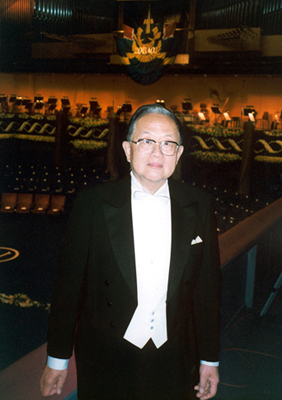
Prof. JU Gong was born in Shanghai in 1929. He graduated from Hsiangya Medical College in 1952 and was elected a Member of Chinese Academy of Science in 1991. In the year of his graduation, he was recruited by the PLA for a teacher of anatomy and thereafter appointed an assistant in the Department of Anatomy of the Fourth Military Medical University in 1953, mainly working on neuroanatomy. He is one of the founders of modern Neuroanatomy in China and he is the first to have published a paper in China using Nauta technique, a tract tracing technique which appeared in the 50s last century and marked a new era of neuroanatomy. In the late 70s and early 80s last century, among many publications, he, in collaboration with two colleagues, wrote a book of neuroanatomical technique. The book turned out to have great influence in China, even benefited many Chinese students of neuroscience in western countries. His early research interest was in hodology, the discipline of tract tracing, of the central nervous system.
Prof. JU has no experience of training aboard and very limited experience of visiting scholarship as well. He made his first visit abroad in 1985, which was an eight-month academic visit at Karolinska Institute, Stockholm, Sweden, followed by another six-month visit at the Salk Institute, San Diego, USA. On his trip from Stockholm to San Diego, he was invited to visit Oxford for one month, during which he accepted the invitation to be a member on the editor board of Neuroscience (a journal with high prestige in the field of Neuroscience), then the only Chinese member, and remains to be on the board till today.
In late 80s, he found that presence of nerve fibers was in close relationship with the anterior pituitary gland cells and typical central synapses on the gland cells and thereafter he switched his research interest to the study on the significance of the nerve fibers in the anterior pituitary, which resulted in 24 SCI publications and the hypothesis of neuro-humoral dual regulation of the anterior regulation. His work has been acknowledged by Prof. Béla Halász, Vice President of the Hungarian Academy of Sciences, in his Geoffrey Harris Memorial Lecture in the Ninth Internal Congress of Endocrinology.
In recent years, in pace with the rising international trends in the study of central nervous system regeneration due to its great theoretical and application values, Prof. JU has focused his major effort on the study of spinal cord injury and repair. A major achievement of his is to formulate a new therapeutic approach to treating spinal cord contusion at an early stage with dramatic success.
